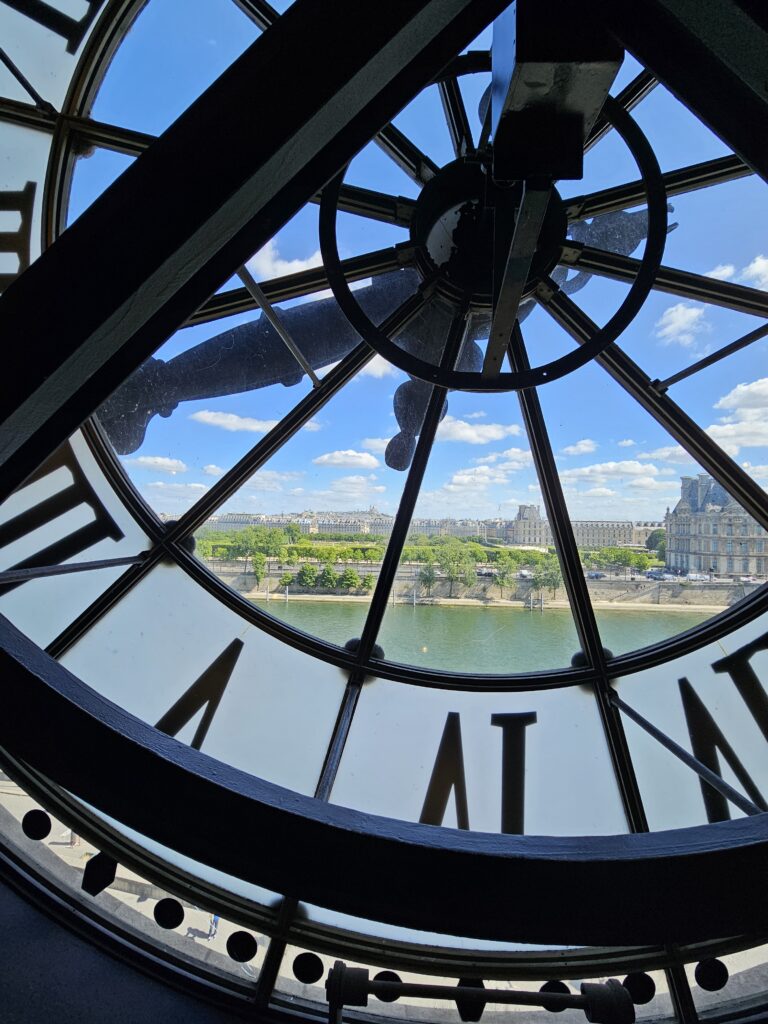
Looking outwards through the clock at the Musée d’Orsay
[This is a follow-on from the previous post Paris – A Short Introduction].
I recently read that ‘A study by the Metropolitan Museum of Art in New York concluded that its patrons spend a median 17 seconds in front of any given painting’ (from The Art of Noticing: Rediscover What Really Matters to You by Rob Walker, published by Ebury Press, ISBN 978-1529104431).
We might add that now the average visitor to any art museum spends that time in front of a painting, not taking a photo of it but of a selfie instead.
The origin of the modern selfie pose?
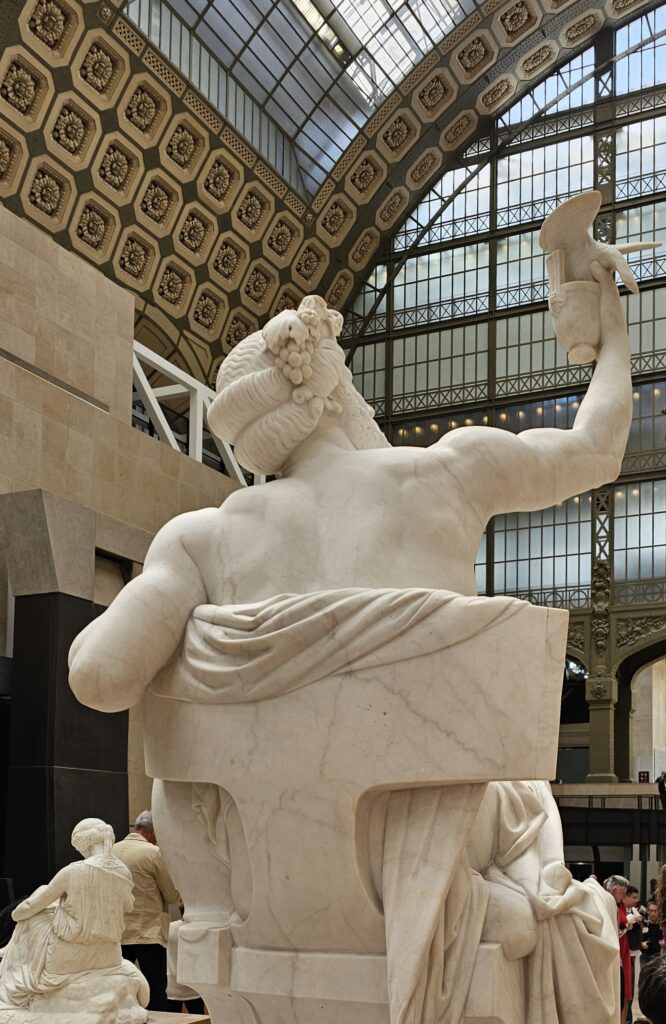
It is almost impossible to have a quiet experience at any of the main museums (Louvre, Musée d’Orsay) and even the smaller ones with artist-specific exhibitions are crowded. This is understandable but challenging nonetheless. The stress starts as soon as you approach the museum entrance, with queues and airport-style security checks. A timed ticket doesn’t let you escape the lines. Once in, often you are required to leave your rucksack and umbrella at the cloak room. Be prepared to only carry your phone and wallet with you, perhaps in a small bag or in your coat pocket.
Most of the museums in Paris are closed once a week. Planning ahead would allow you to not miss the museum you want to visit. Look out for weekly late night openings and book an early or late dinner. Most museums have on-site catering. We had a lovely lunch in the Musee d’Orsay’s main restaurant, underneath the elaborately painted ceiling and hanging chandeliers. I will write about this in the eating in Paris post.
To be realistic about what we could achieve during this trip, we settled for David Hockney 25 at the Fondation Louis Vuitton, and a day at the Musée d’Orsay. Tickets for each cost €16 per person. We also tucked in visits to Musée Canarvalet and Maison de Victor Hugo (Place des Vosges), both of which were free to visit.
David Hockney 25 at the Fondation Louis Vuitton
It is a pleasant cafe-lined walk from Les Sablons métro station to the Fondation Louis Vuitton. You could cut a corner by walking through the Jardin d’Acclimatation (an amusement park) by showing your exhibition ticket to the staff at the entrance. When you have finished viewing the exhibition, take a walk on the outside terraces with views of the city.
The Fondation Building and Garden

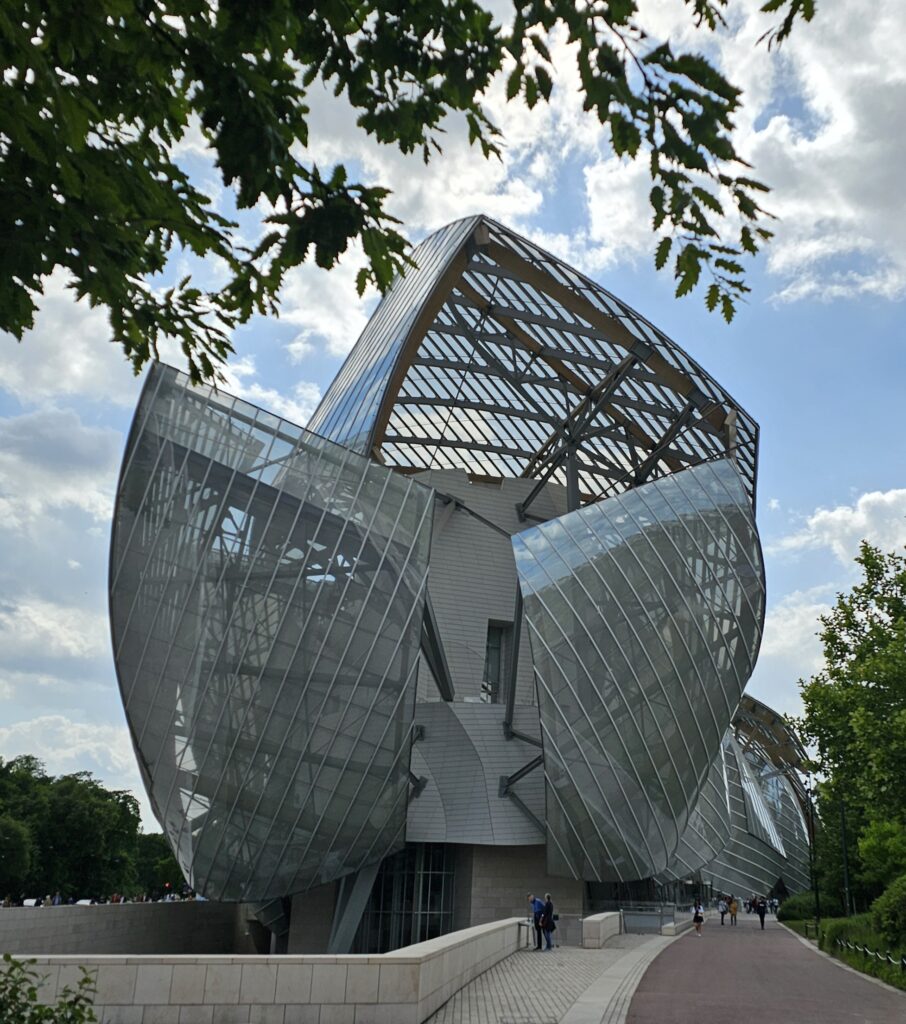
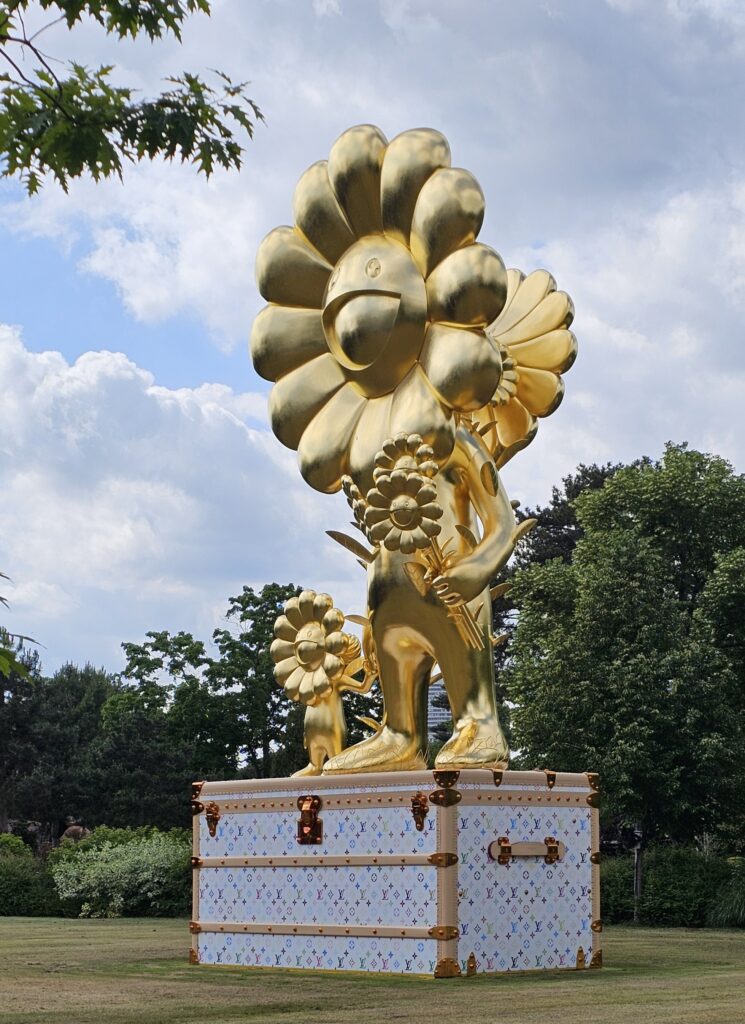
Living in London, we had seen many of David Hockney’s landscape paintings before, when they were exhibited at the Royal Academy of Arts. But we happened to be in Paris so it was silly not to go and see some of his more recent artwork. This exhibition is also a retrospective.
The exhibition space is extensive and in particular the lighting is excellent. I have just had a thought that this would be a good space to show big and dramatic works by Anish Kapoor and Ai Weiwei.
The exhibition really does represent the breadth and depth of Mr Hockney’s work (or as any art student would say, his oeuvre). I took long, hard looks at the artwork done on an i-Pad and realised that even with such ‘help’, I would never manage to see colour, line, shade, texture, structure the way that artists do.
A catalogue of the works displayed is available in French and in English (David Hockney: The book that accompanies the David Hockney 25 exhibition at the Fondation Louis Vuitton by Norman Rosenthal, published by Thames and Hudson, ISBN 978-0500029527).
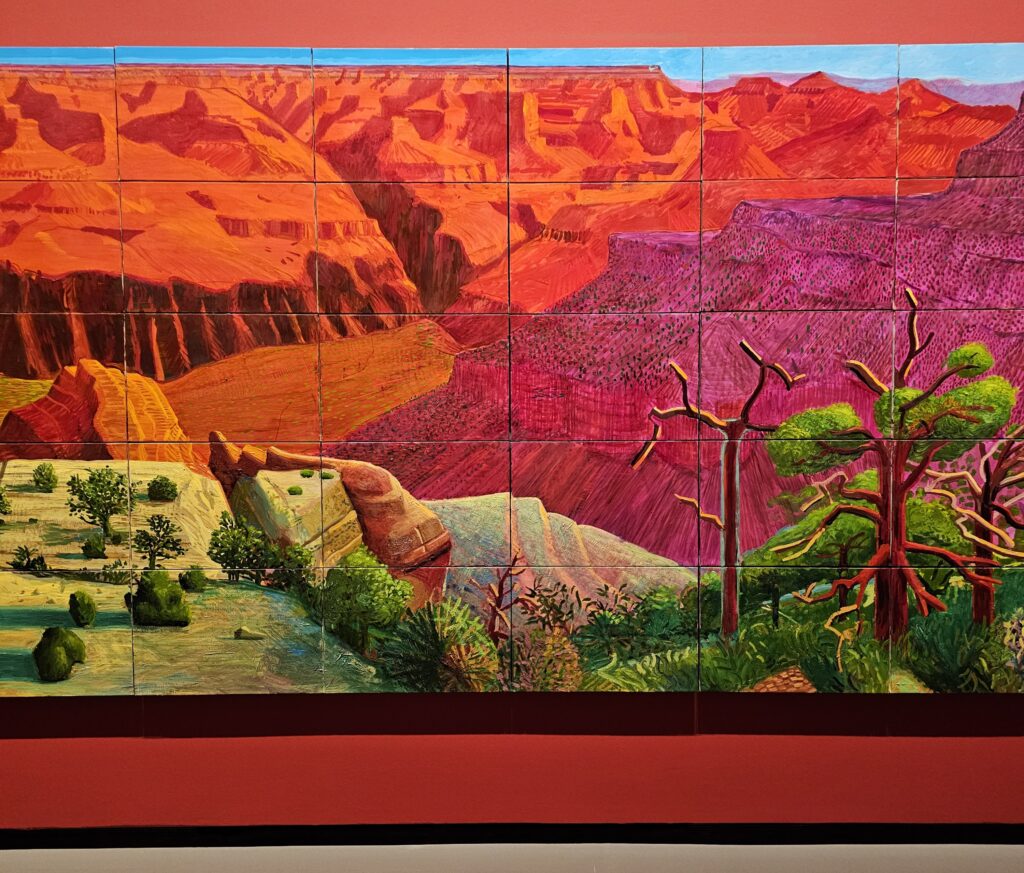
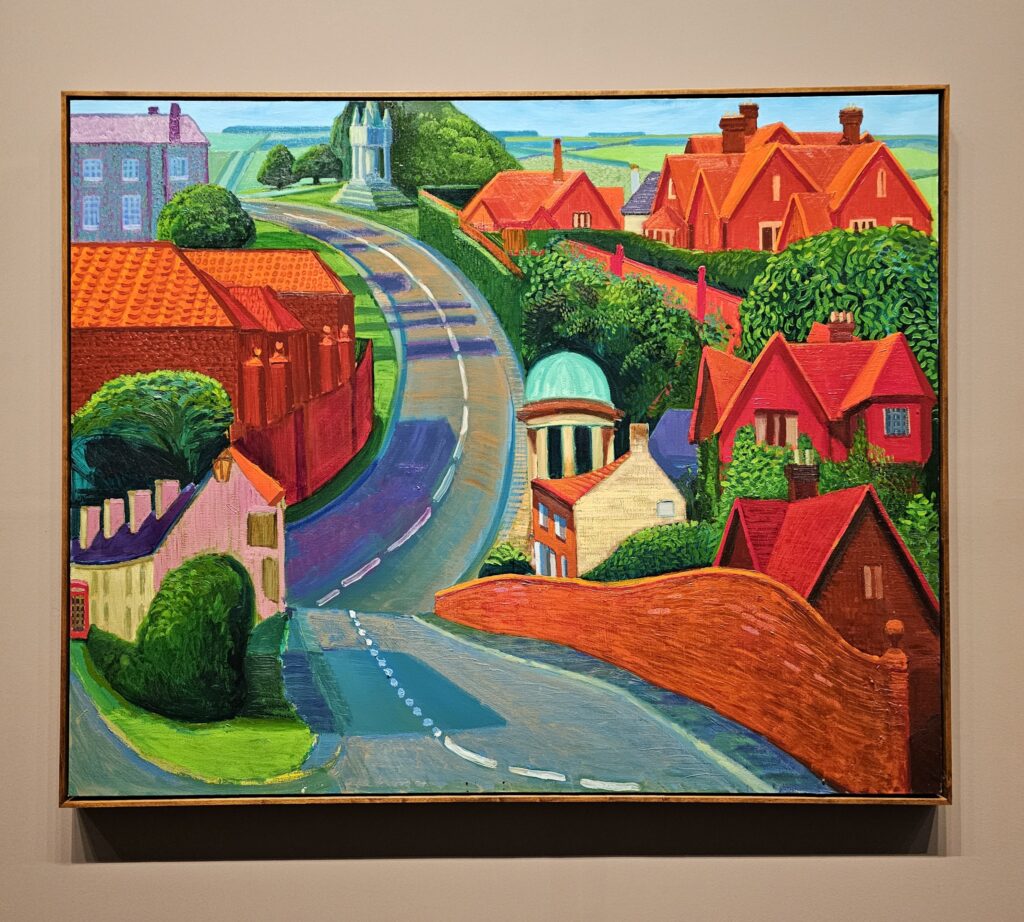
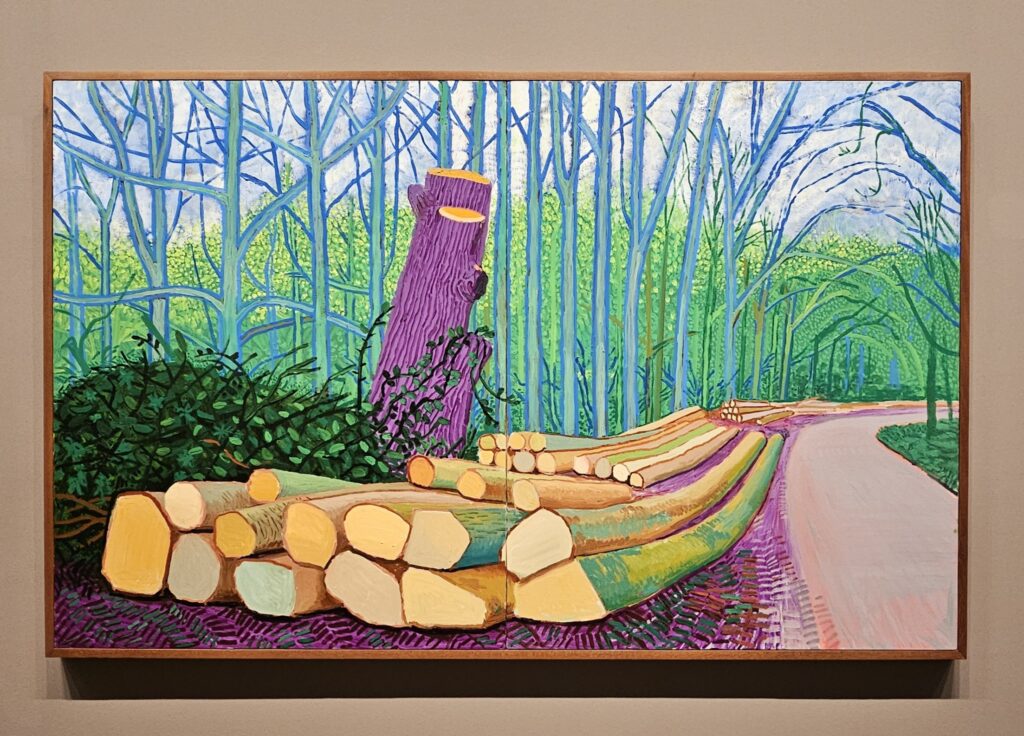
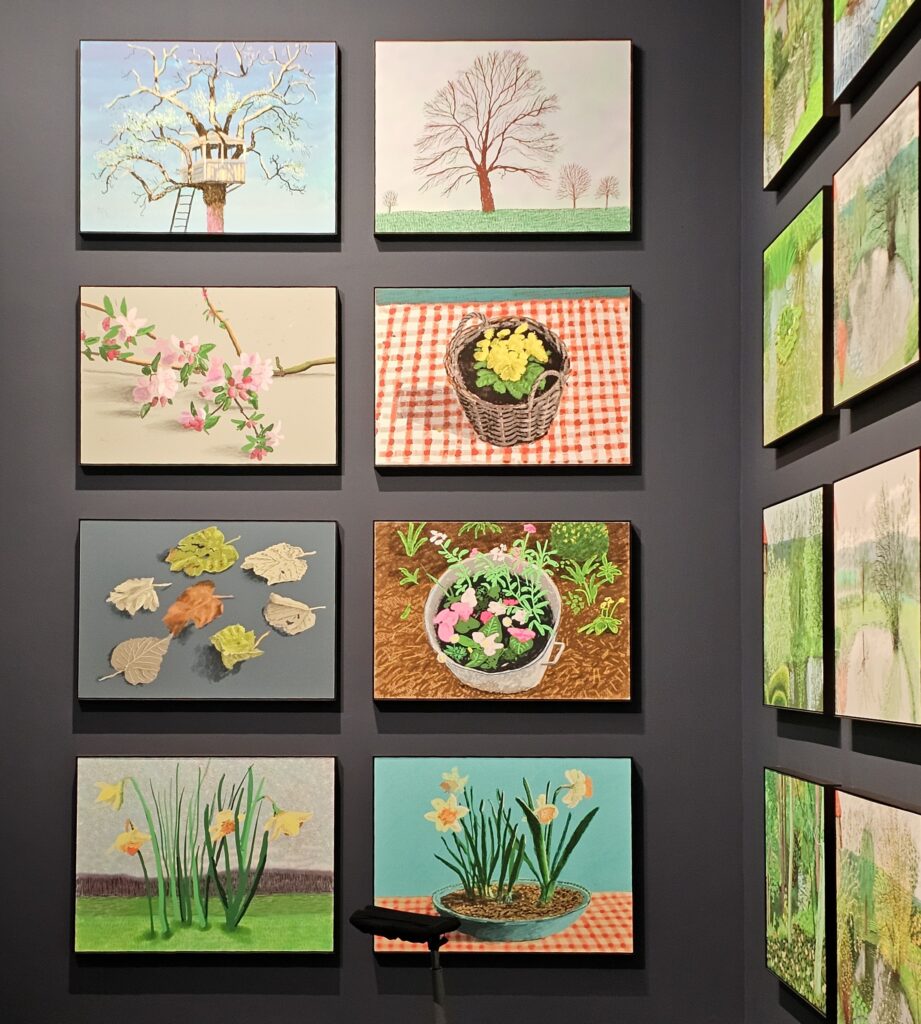
This is the museum with the big clock (it was a former train station), just as the Louvre is the one with the glass pyramid. We could only do one major museum so chose the Musée d’Orsay.
Sometimes you hear people say (of a museum) ‘you could easily spend the whole day here’. We nearly did so, arriving at 10.30 am and leaving at 3.30 pm, with a one hour lunch break in between. Looking at the beautiful paintings, sculptures, furniture and temporary exhibitions with no plan or agenda was refreshing and uplifting.
It was extremely crowded in the Impressionist rooms and I wonder why that collection is not spread out a bit more. I imagine it must be to show us the evolution and interpretation of the style by different artists. It did not help that there were private tour guides leading their small groups round, thus causing bottlenecks in front of certain paintings. It was not as crowded in the rest of the museum where the artwork is equally important and interesting. The museum’s own website is a treasure trove of information on its collection, so it is an idea to make a note of any artwork you particularly liked and then read up on it later.
It has been a long time since I had to bring any child to a museum, but this would be a magnificent place for an art hunt. Just looking for animals in the sculptures and paintings would keep a child entertained and busy for a good length of time.

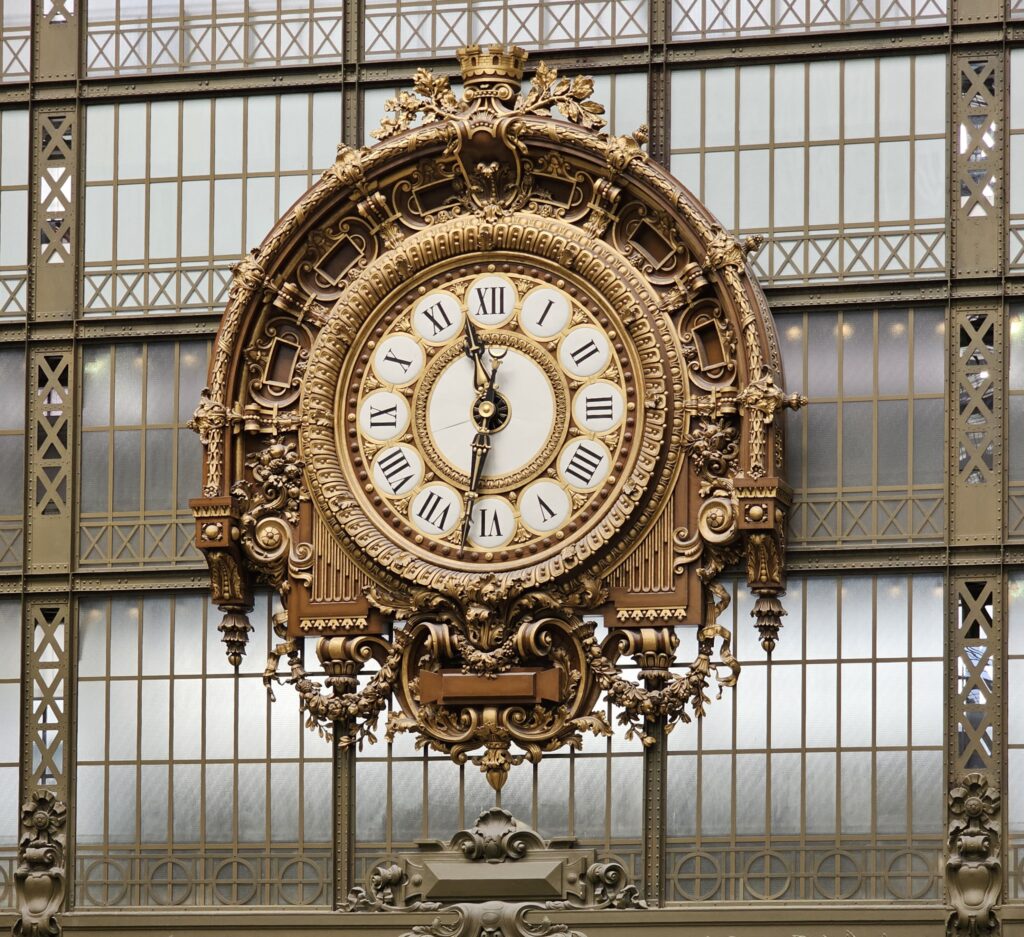
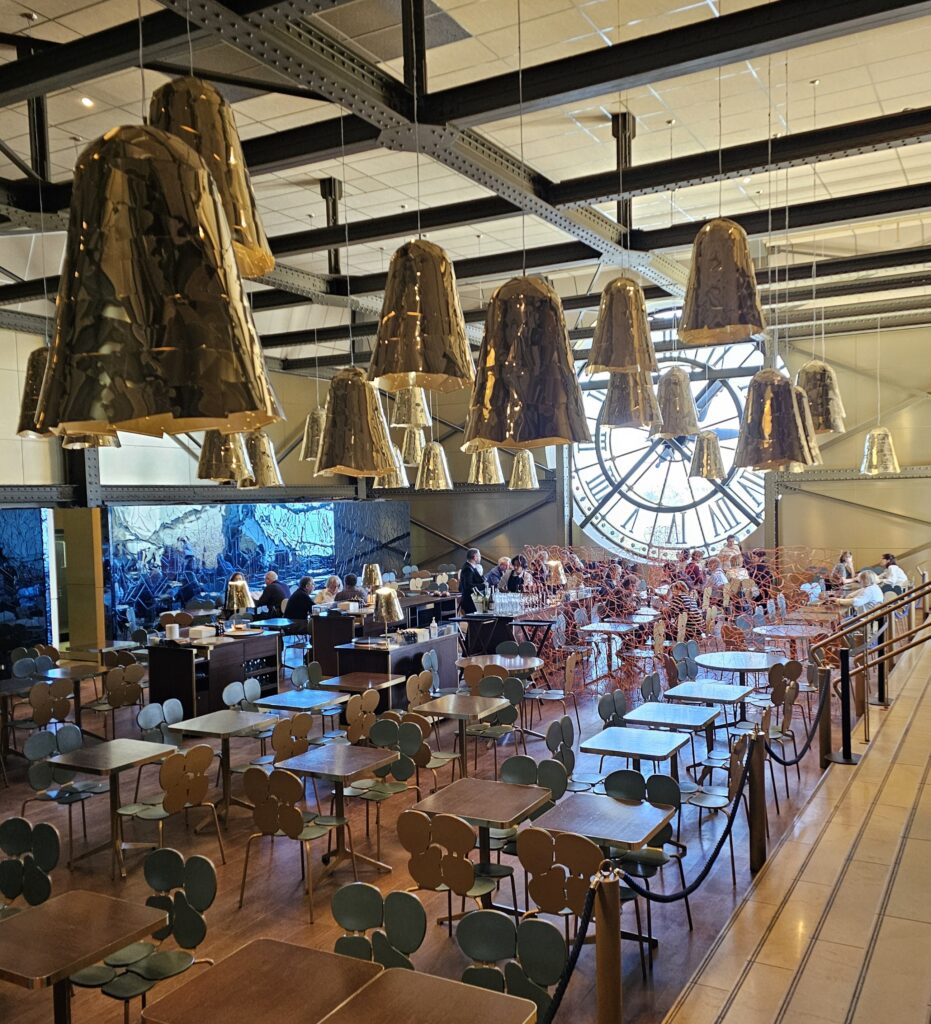
Although the museum is renowned for its Impressionist paintings, there are so many more things to see and we particularly enjoyed the period furniture collection.
.
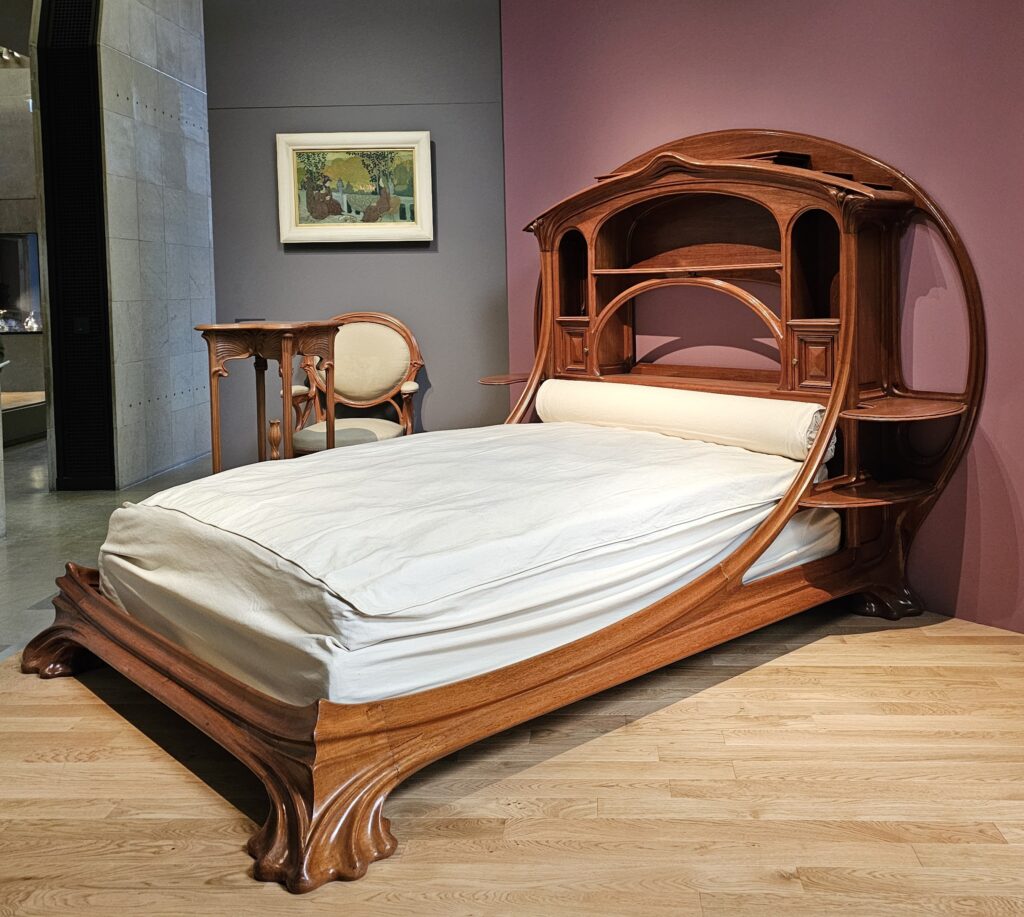
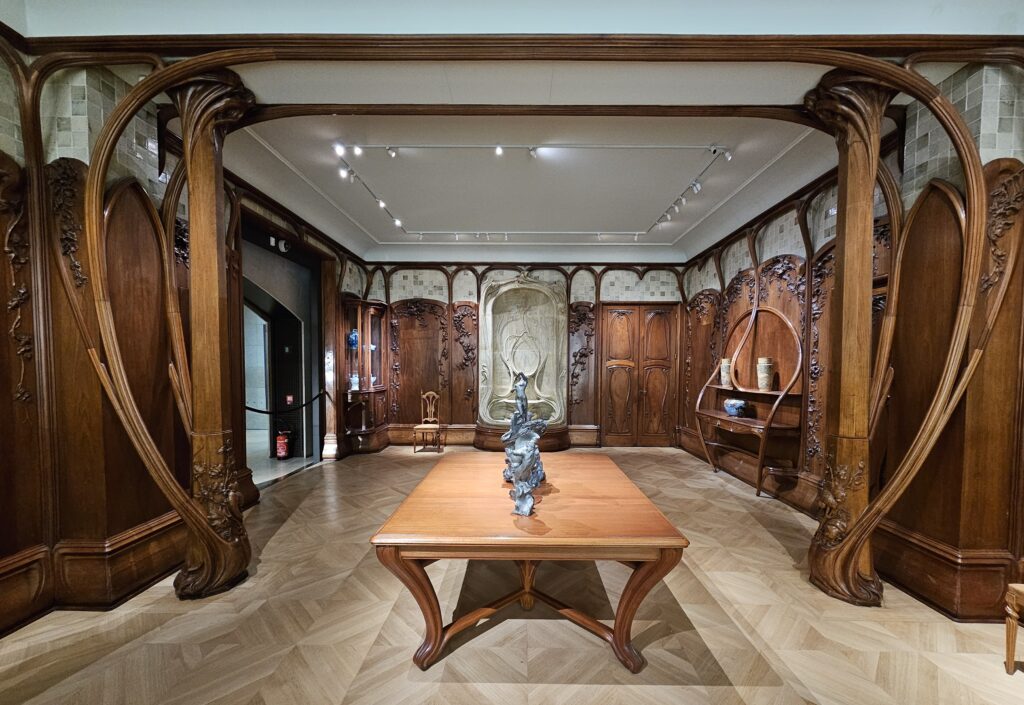
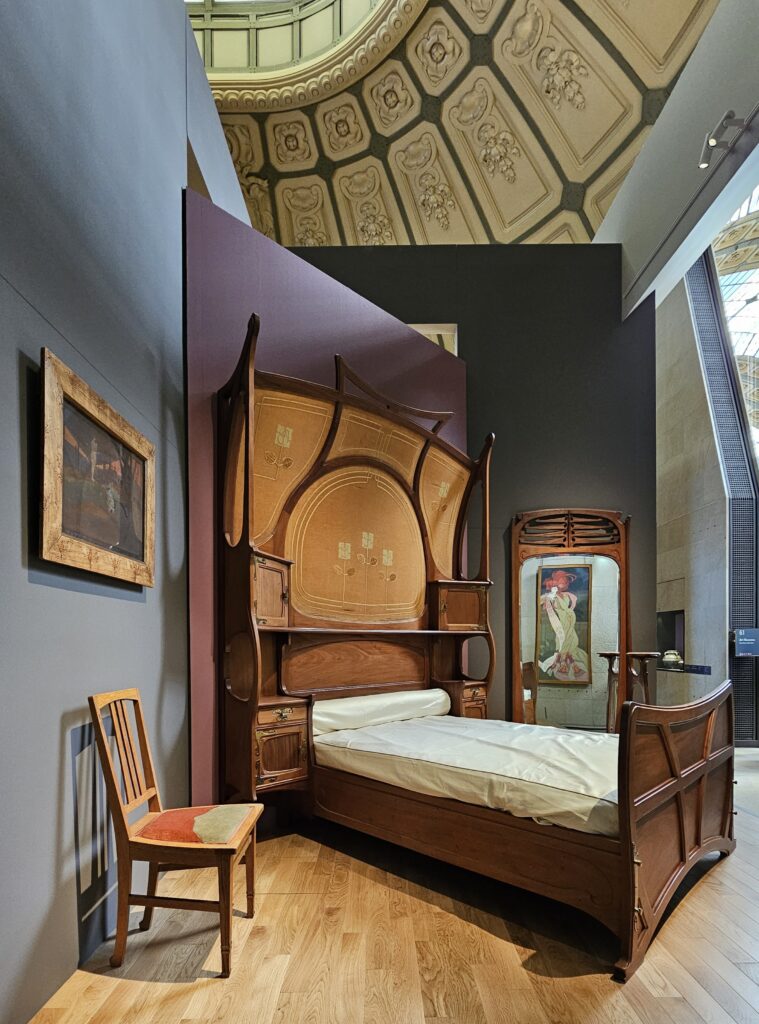
This unique museum tells the story of Paris: its history, buildings and famous residents. There is a lot to see and since it is free to visit, this is a good museum to focus on a particular aspect that interests you. Like the Maison de Víctor Hugo (below) you could just spend a short time here as part of a longer walk in the area.
The courtyard of the museum
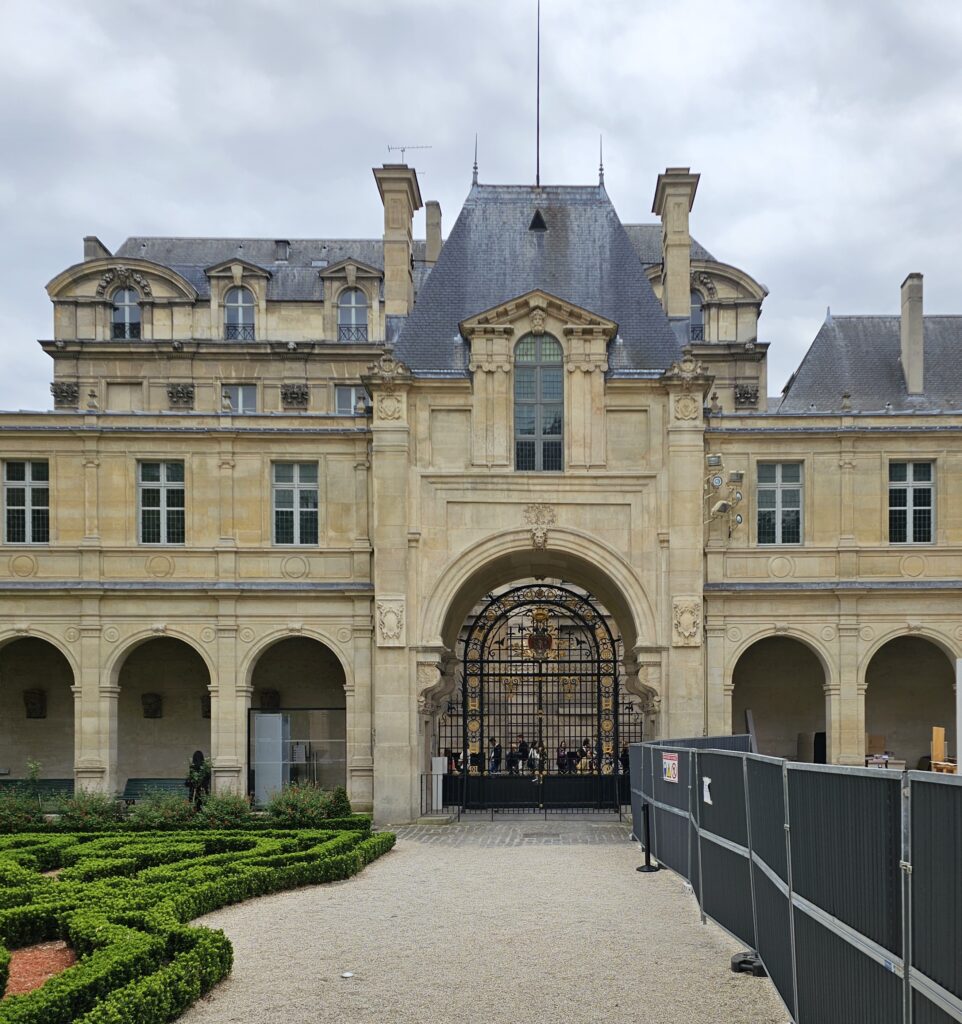
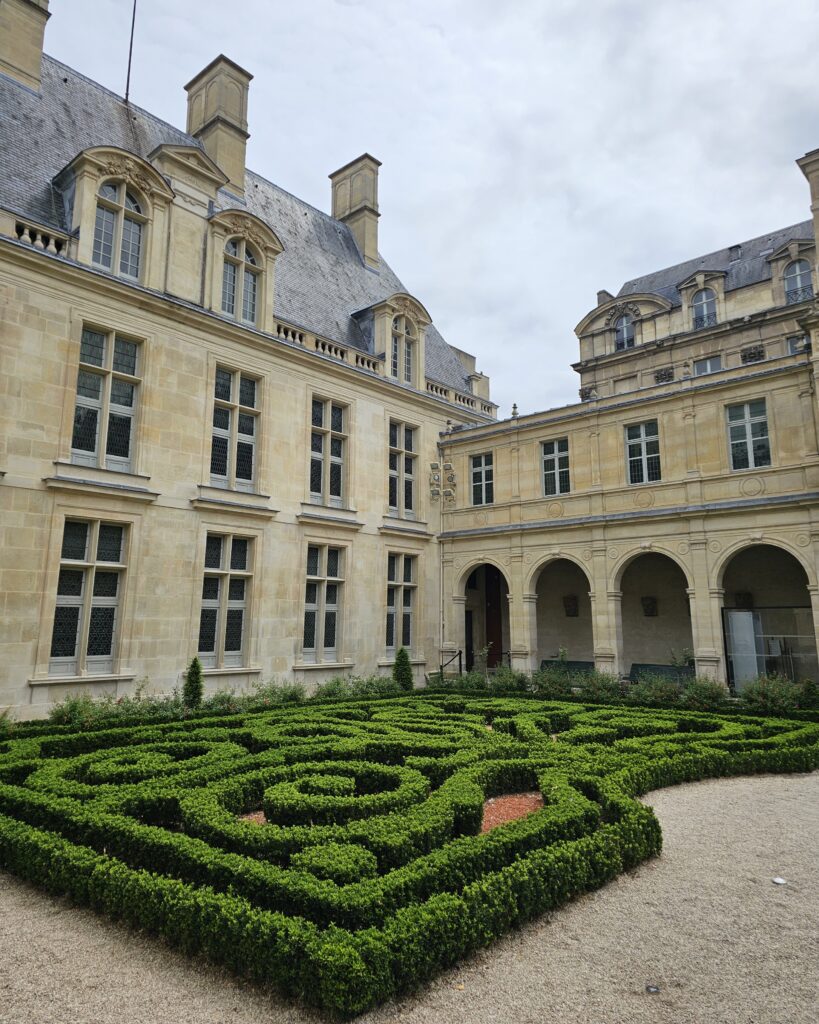
There are many, many things of interest in this museum, and I have chosen just one item to show here. This is a stone model of the Bastille, a medieval armoury, fortress and political prison. Unlike London’s Tower of London, with which it shares some similarities, the Bastille did not survive.
This model was carved out of one of the stones from the Bastille by Pierre François Palloy, the contractor who oversaw its demolition. He made 83 such models which were sent to the French departments to commemorate the event which marked the start of the French Revolution.

The order of the museums we visited was: Thursday/ David Hockney 25, Friday/ Musée d’Orsay, Saturday/ Maison de Victor Hugo and Musee Carnavalet. Victor Hugo’s house is free to visit and small enough to add to a walk in the area surrounding the beautiful Place des Vosges.
Victor Hugo’s most famous novels are The Hunchback of Notre-Dame (1831) and Les Misérables (1862). If you want to read the latter in English then the translation by Julie Rose is recommended.
A view from the window of Place des Vosges (top) and one of the rooms in the museum (below)
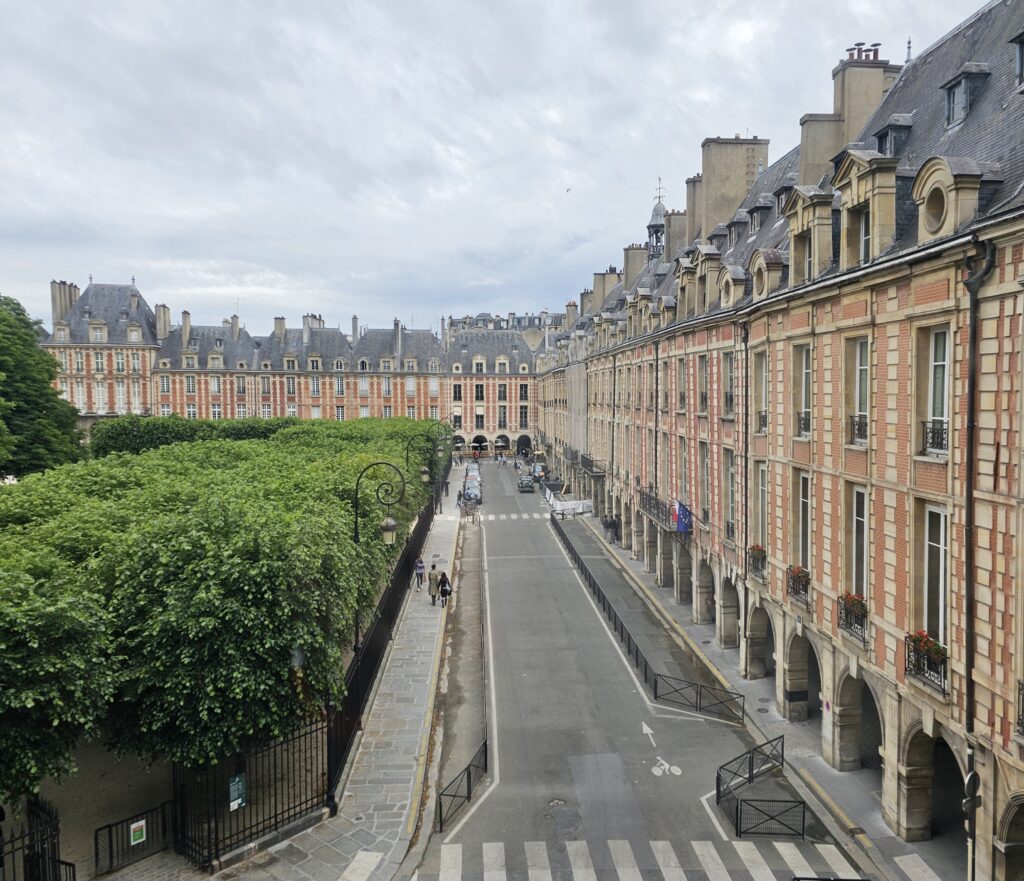
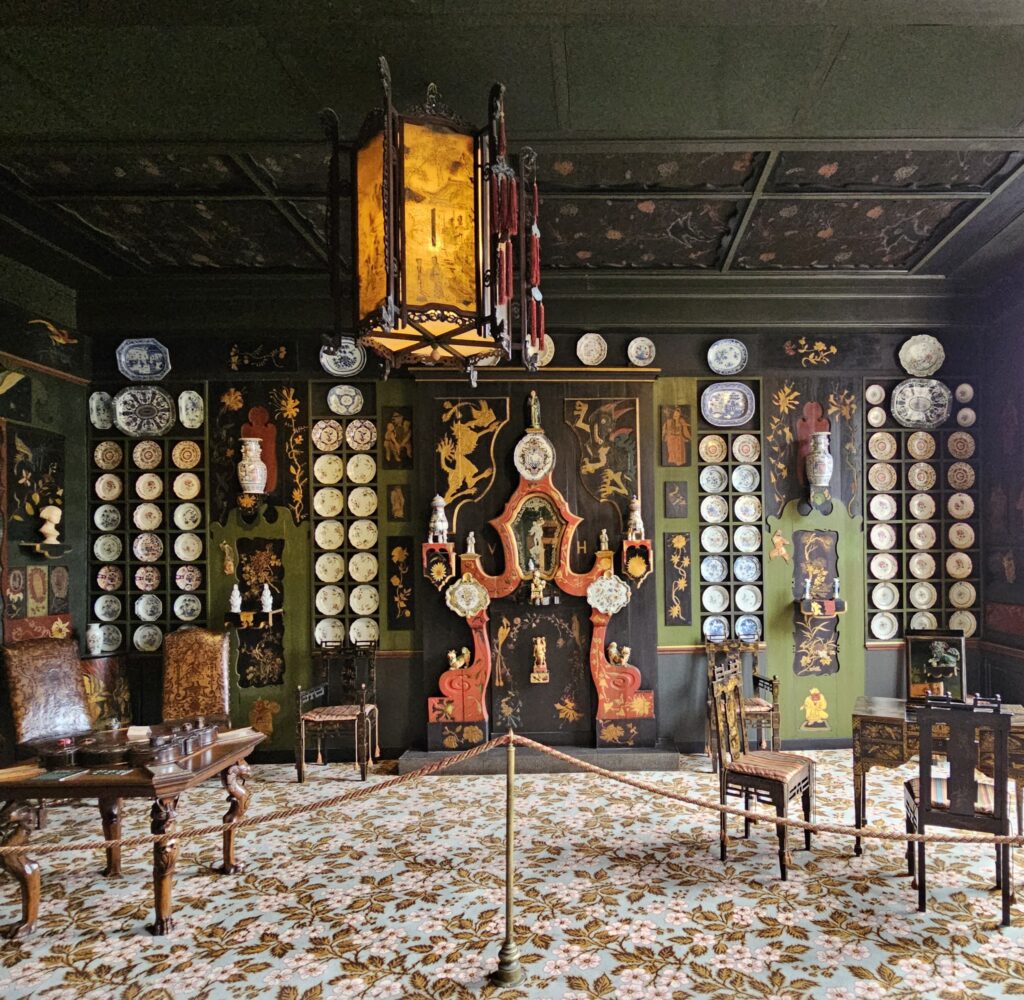
I am finishing this post with another photo of the giant facade clock at the Musée d’Orsay. It is a close up as there were just too many people taking selfies in front to the clock. My tip for the any visit would be to book a ticket for when the museum opens and then run up to the 5th floor take a photo of the whole clock. It is one of those photos everyone wants in their photo album. My first visit to the Musée d’Orsay was in 1988 and I will check my old printed photos to see if I have a photo from back then – I am sure I do.
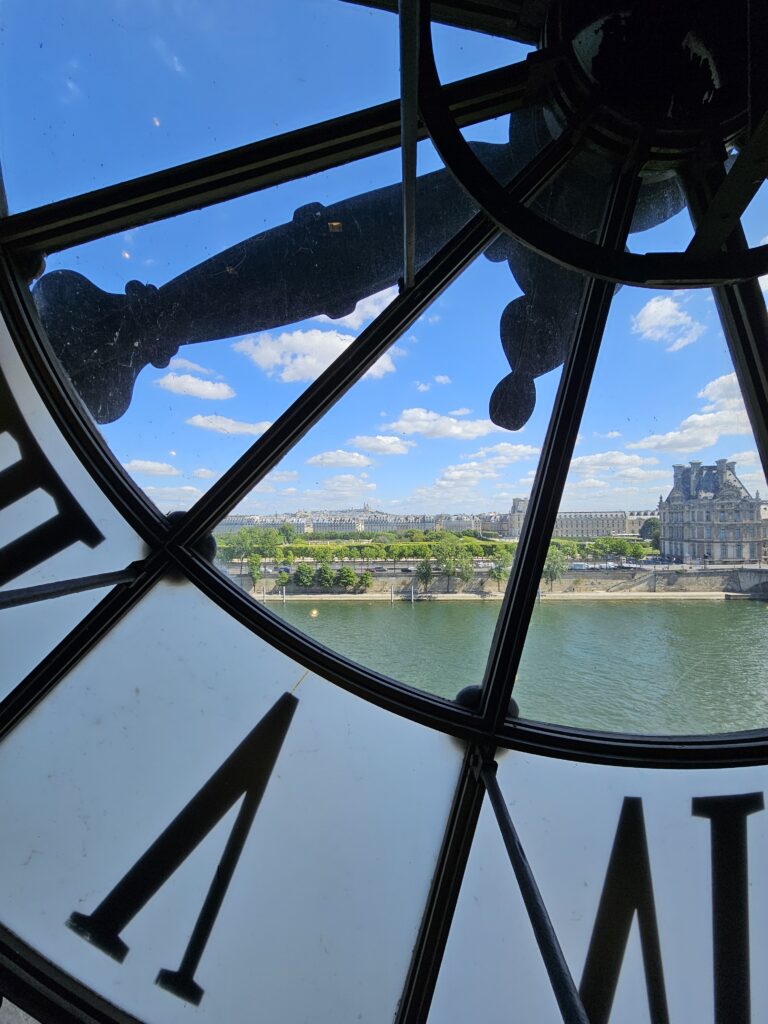
In the next post I will share some thoughts and photos on walking in Paris.
